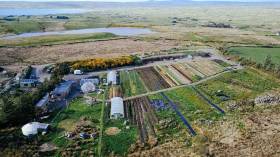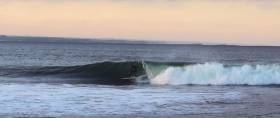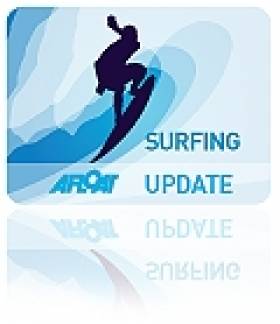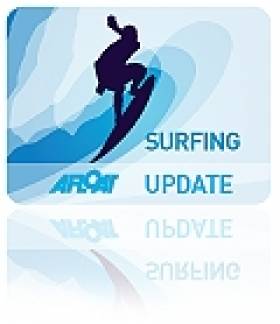Displaying items by tag: Fergal Smith
Surfing Farmers Crowdfunding To Expand Organic Farm
#Surfing - Surfing farmers in Co Clare are hoping to raise €300,000 to expand their organic vegetable farm, as the Irish Examiner reports.
Afloat.ie previously highlighted the Moy Hill Community Garden started by Lahinch surfer Fergal Smith and fellow wave-riders Matt Smith and Mitch Corbett.
Now the big-wave surfers turned seed-sowers and field-diggers have launched a crowdfunding campaign to purchase 60 acres of land to expand their farm, which already grows enough to feed 50 families in the area.
The expansion aims to triple that number, as well as enable the planting of 30,000 native trees — with future plans including a ‘forest school’ for people “seeking balance and peace in their lives”, says Smith.
Thirty-six days remain in the fundraising campaign, with further details available HERE.
Surfing Farmers Make Waves In Co Clare
#Surfing - Lahinch-based surfing pro Fergal Smith is the subject of not one but two recent online documentaries — and neither for his big wave exploits.
Smith turned to organic farming after a globetrotting surfing career, teaming up with fellow wave-riders Mitch Corbett, Matt Smith and others to start the Moy Hill Community Garden.
Having grown up around organic farming all his life, Smith saw an opportunity to share what he learned with his fellow surfers — and encourage young people to get interested caring for the land.
Their organic farming collective and its location on the stunning Wild Atlantic Way are the subjects of ‘Beyond the Break’, a short film for The Perennial Plate — a series that aims to highlight local producers around Ireland’s breathtaking landscape, as the Clare Herald reports.
Yet at the third episode of ‘food ranger’ Mark Harris’ Endless Winter Europe series shows, Smith and his surfing mates still make time for the water when the surf is up.
Clare Pro Surfer To Make Waves In General Election
#Surfing - A long-time professional surfer from Mayo is set to make waves in politics in the upcoming General Election, as the Clare Herald reports.
Fergal 'Ferg' Smith, who can count starting an organic farm in Lahinch among his achievements as one of Ireland's first internationally regarded pro waveriders, is set to run on the Green Party ticket in the Clare constituency.
And making the most of Clare's natural environment to push for sustainability in all aspects of life is at the heart of his manifesto.
"Politics was never my intention, but there is a responsibility on us all to be part of the solution," he says.
The Clare Herald has more on the story HERE.
Shore Shots Film Fest Is 'Roaring Success'
#Surfing - Ireland's first ever surfing themed film festival has been hailed as a "roaring success" all round, according to surf website Magicseaweed.
The Shore Shots Irish Surf Film Festival - which took over the Light House Cinema and the Generator Hostel in Dublin's Smithfield last weekend, as previously reported on Afloat.ie - featured the Irish premieres of five new big-screen surfing films, including the 3D epic Storm Chasers.
But it was the Short Film section attracted the most excitement and plaudits over the two days, with an edit of Fergal 'Ferg' Smith - tackling the biggest and best waves Ireland has to offer over two years - claiming top prize in the category.
Others of note in the shortlist include bodyboarder Peter Clyne and some truly exciting POV footage from Dylan Scott - shot with a single GoPro and put together on the smallest of budgets.
North Of Nowhere from Peter Clyne - Outer Cells on Vimeo.
trendynewatrocity2 - By Dylan Stott from MSW on Vimeo.
Magicseaweed has much more on happenings from the festival HERE.
Best Ever Surfing Winter for Ferg and Tom
Surfing magazine MagicSeaweed recently caught up with waveriders Fergal Smith and Tom Lowe to get the lowdown on winter surfing on the Emerald Isle.
The pair describe how flat surf after last November's 'big freeze' gave way to a run of big waves from January to March. For UK pro Lowe in particular it was his best ever season - but also one that left him spent.
"The finisher for me was that Mully morning session [off Mullaghmore]," he told MagicSeaweed. "Ferg towed me into the best wave of my life that morning; sounds wet but I was drained emotionally and physically by it."
For 'Ferg' Smith, the highlight was the paddle session at the Pampa wave near Bundoran.
"I grew up surfing Pampa so I know the wave well but I have never surfed it as big and perfect at that," he said.
MagicSeaweed has more insights from Tom and Ferg HERE.
































































